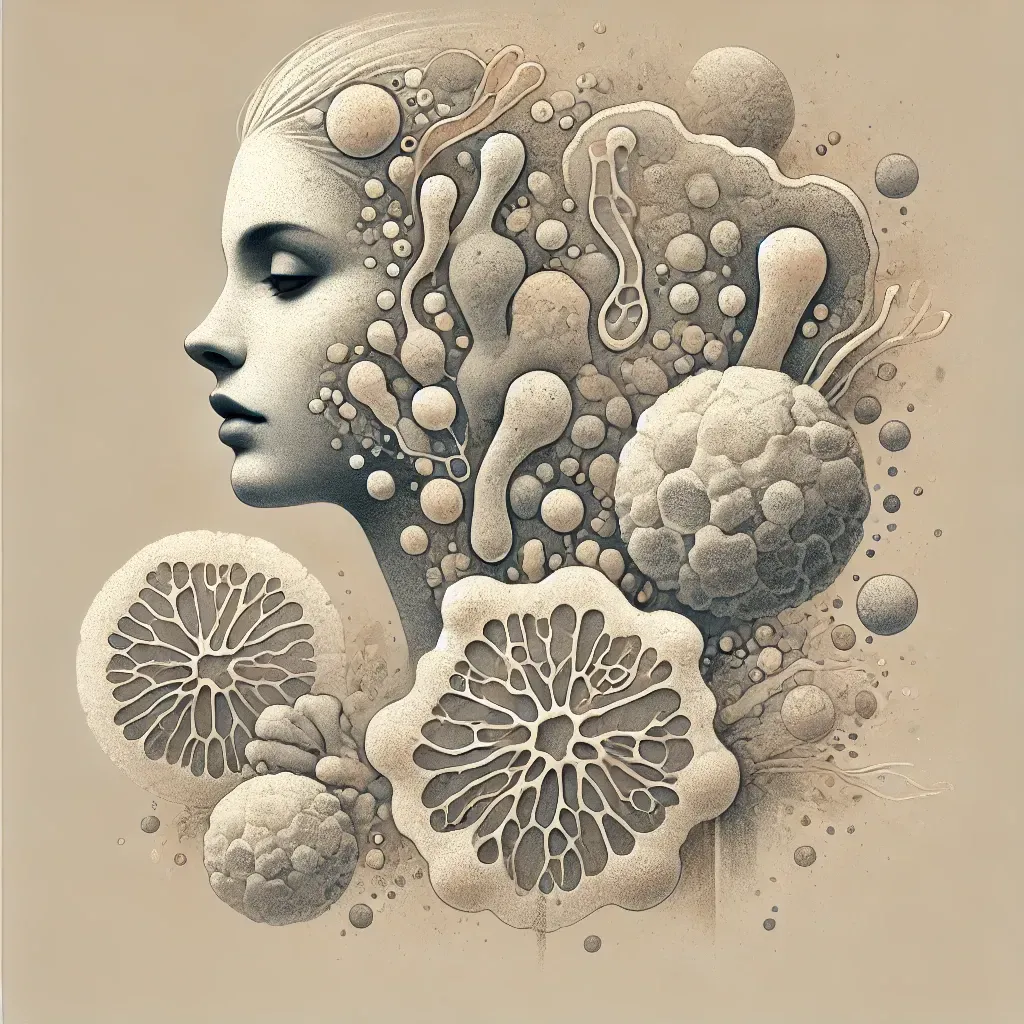Unlocking Hormonal Balance: How HTMA Mineral Ratios Influence Female Hormones
Female hormones play a vital role in overall health and wellbeing, influencing everything from mood and energy to reproductive health and metabolism. Imbalances in hormones like estrogen, progesterone, and cortisol can lead to various health issues, including mood swings, fatigue, weight gain, and more.
Hair Tissue Mineral Analysis (HTMA) offers valuable insight into how mineral levels and ratios in the body are connected to hormonal health.
In this post, we’ll explore how HTMA can provide a window into female hormonal balance by analyzing specific mineral ratios and their relation to key hormones.
1. Sodium to Potassium (Na/K) Ratio: The Vitality Ratio
The sodium to potassium (Na/K) ratio is often referred to as the “vitality ratio” because it plays a central role in overall health and energy levels. This ratio is a critical marker of adrenal function, which is closely linked to the production of hormones like cortisol and aldosterone. Cortisol is a stress hormone that, when imbalanced, can wreak havoc on female hormones, particularly estrogen and progesterone.
High Na/K Ratio: A high Na/K ratio suggests elevated adrenal activity, often due to chronic stress or inflammation. This can lead to an overproduction of cortisol, which, in turn, may suppress progesterone levels and contribute to estrogen dominance. Symptoms of estrogen dominance include weight gain, mood swings, irregular periods, and PMS.
Low Na/K Ratio: A low Na/K ratio, on the other hand, indicates adrenal burnout or exhaustion. When cortisol levels are depleted due to prolonged stress, it can lead to low progesterone, irregular menstrual cycles, and a higher risk of infertility. This imbalance may also cause fatigue, sugar cravings, and a weakened immune system.
In summary, the Na/K ratio reflects the balance between cortisol and other female hormones. Keeping this ratio in a healthy range is essential for maintaining hormonal balance and preventing estrogen dominance or progesterone deficiency.
2. Calcium to Potassium (Ca/K) Ratio: The Thyroid and Estrogen Connection
The calcium to potassium (Ca/K) ratio is often referred to as the “thyroid ratio,” as it reflects thyroid activity. The thyroid plays a crucial role in regulating metabolism and energy levels, but it also influences female hormones, particularly estrogen. An imbalance in thyroid function can lead to a domino effect on hormones, including estrogen and progesterone.
High Ca/K Ratio: A high Ca/K ratio is indicative of sluggish thyroid function, also known as hypothyroidism. This condition can lead to higher estrogen levels because the thyroid helps regulate estrogen metabolism. Hypothyroidism can also contribute to symptoms like weight gain, depression, and heavy or irregular periods, which are often linked to estrogen imbalances.
Low Ca/K Ratio: A low Ca/K ratio, on the other hand, suggests an overactive thyroid, or hyperthyroidism. This condition can cause lower estrogen levels, leading to symptoms such as light or absent periods, anxiety, and increased heart rate. Hyperthyroidism can also affect fertility by disrupting the delicate balance of estrogen and progesterone.
In women, maintaining a balanced Ca/K ratio is crucial for proper thyroid function, which directly impacts estrogen metabolism and overall hormonal health.
3. Calcium to Magnesium (Ca/Mg) Ratio: The Stress and Progesterone Balance
The calcium to magnesium (Ca/Mg) ratio is often called the “stress ratio,” as it reflects the body’s ability to handle stress. This ratio is particularly important for balancing the effects of estrogen and progesterone, two key female hormones that are sensitive to stress levels.
High Ca/Mg Ratio: A high Ca/Mg ratio suggests that the body is under stress, which can elevate cortisol levels and disrupt progesterone production. Low progesterone levels can lead to symptoms like irregular periods, PMS, anxiety, and even infertility. High stress levels can also contribute to estrogen dominance, worsening symptoms like bloating, mood swings, and fatigue.
Low Ca/Mg Ratio: A low Ca/Mg ratio indicates that magnesium levels are higher in relation to calcium. Magnesium is essential for relaxing the nervous system and supporting the production of progesterone. Women with low progesterone levels may benefit from increasing their magnesium intake to support hormonal balance.
The Ca/Mg ratio is a key indicator of how well a woman’s body is managing stress and, in turn, how well her progesterone and estrogen levels are balanced.
4. Zinc to Copper (Zn/Cu) Ratio: The Hormonal Regulator
The zinc copper (Zn/Cu) ratio is another important marker in HTMA, as it reflects the balance between two minerals that are crucial for hormonal regulation. Zinc supports the production of progesterone, while copper is closely linked to estrogen metabolism.
High Zn/Cu Ratio: A high Zn/Cu ratio indicates higher levels of zinc relative to copper, which can support progesterone production and help prevent estrogen dominance. Women with symptoms of low progesterone, such as irregular periods or PMS, may benefit from optimizing their zinc levels.
Low Zn/Cu Ratio: A low Zn/Cu ratio, on the other hand, suggests higher levels of copper relative to zinc. This imbalance is often associated with estrogen dominance, as copper is linked to increased estrogen activity. Symptoms of estrogen dominance, such as bloating, breast tenderness, and mood swings, are more likely to occur when the Zn/Cu ratio is out of balance.
Maintaining a healthy Zn/Cu ratio is essential for regulating the balance between estrogen and progesterone, ensuring proper reproductive health and hormonal harmony.
5. Phosphorus Levels and Hormonal Health
Phosphorus, though not part of a specific ratio, plays a crucial role in energy metabolism and hormone production. Low phosphorus levels can be an indicator of poor energy production and may reflect a state of hormonal burnout. Women experiencing chronic fatigue, irregular cycles, or hormonal imbalances may benefit from assessing their phosphorus levels through HTMA.
Conclusion: HTMA as a Tool for Female Hormonal Balance
Hair Tissue Mineral Analysis (HTMA) is a powerful tool for understanding the intricate relationship between minerals and female hormones. By analyzing key mineral ratios—such as sodium to potassium, calcium to potassium, calcium to magnesium, and zinc to copper—HTMA provides valuable insights into how the body’s mineral balance affects hormone production, stress management, and overall health.
Balancing these mineral ratios can help address common hormonal imbalances, such as estrogen dominance, low progesterone, thyroid dysfunction, and adrenal fatigue.
For women looking to optimize their hormonal health, HTMA offers a personalized approach to achieving balance and wellbeing.
To truly understand your body’s zinc levels and how they fit into your mineral landscape, I highly recommend getting an HTMA test. And here’s the exciting part — something special is on the horizon for the holidays, so make sure you’re signed up for my newsletter and keeping an eye on your inbox.
You won’t want to miss it!
Don't Miss Out!

Heidi Toy Functional Medicine Blog























































































